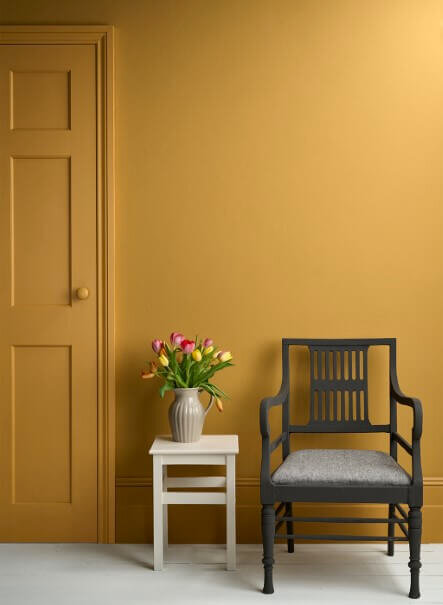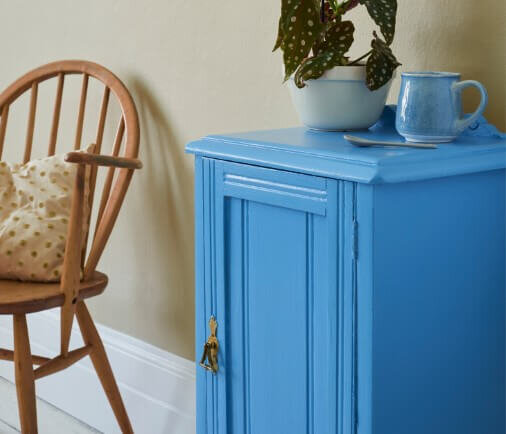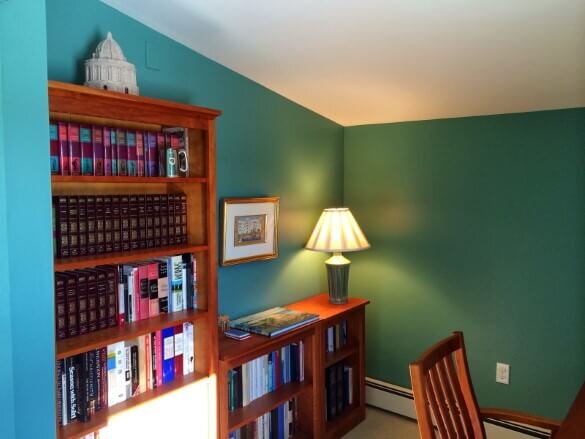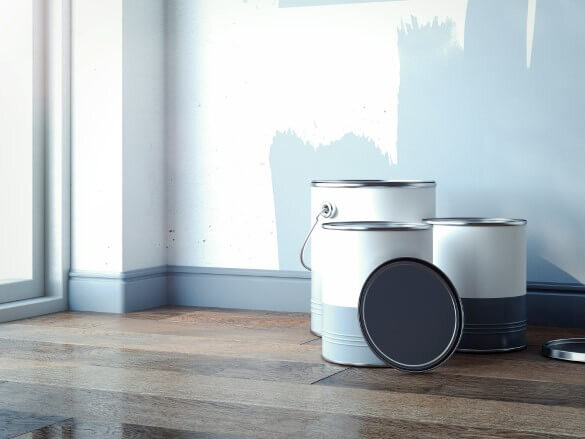
Satin paint sits exactly in the middle of the typical paint sheen scale, making it the perfect fit for many projects. There are 5 paint sheens: Flat or matte (sometimes listed together and other times separately as two sheens), eggshell, satin, semi gloss, and high gloss paint.
Paint sheen refers to the amount of shine or glossiness in paint. At the bottom end of the scale, flat finishes have no luster, compared to a high gloss paint finish which leaves a mirror like shine.
What makes satin paint so versatile? Where are the best places to use it?
What Is Satin Paint?
Satin paint is sometimes described as velvety.
It typically does not have a reflective shine in low light but will have one in bright or direct light.
One of the benefits of the glossiness of this finish is that it provides more durability than a flat or eggshell finish.
Drawbacks Of Satin Paint
As with most things, there are some drawbacks to satin paint.
Satin finishes will make wall imperfections and textures more noticeable due to the glossy sheen in the paint.
Touch ups will also be more noticeable than if you used a matte or eggshell paint.
Although some homeowners enjoy the luster of a satin paint finish, others are put off by the shine, especially if they have textured walls.
Be sure to test out a few finishes to find your preference.
Common Uses For Satin Finish
Satin paint is used in many interior spaces. In fact, if you like the sheen, it’s an excellent sheen to use throughout your entire house.
Satin finishes clean easily, making them a great choice for kitchens, bathrooms, and high traffic areas around your home. It is also great for painted furniture pieces.
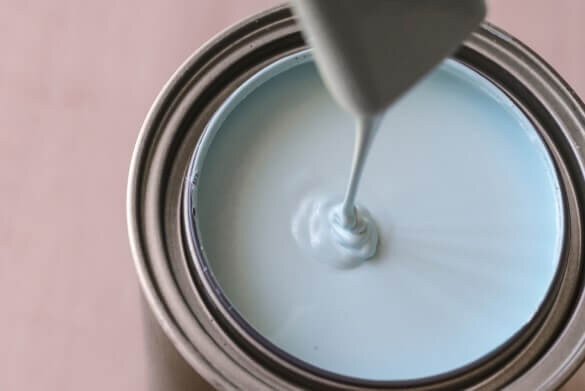
Why Use Satin Paint?
One of the reasons to use satin paint is so popular is its durability and its moisture resistance. It is scuff resistant and cleaning is a breeze with warm water and a soft cloth.
In fact, it can withstand regular washing and light scrubbing, something you will not be able to do with a flat finish.
How Satin Paint Differs From Other Paint Glosses
Flat or matte finishes have no shine to them and are perfect for hiding surface imperfections and helping reduce the appearance of wall texture.
They are also great for touch ups because they blend well.
The biggest drawback to flatter paints is that they are not very durable and paint can wash away with cleaning.
Eggshell paint is also commonly used throughout homes. It is slightly less durable than satin but is better at hiding blemishes on your walls.
If you’re not keen on the shine of satin paint, eggshell paint is another excellent choice.
Semi gloss and high gloss paints have excellent durability and are very easy to clean.
However, one of the biggest drawbacks is they amplify imperfections and blemishes.
Along with that, most homeowners do not like the look of glossy paint on walls.
Final Thoughts
You can’t go wrong choosing a satin paint finish to use throughout your home. Although it won’t hide imperfections like eggshell, flat, or matte sheens, it provides more durability.
It holds up well in high traffic areas and is an excellent choice for areas that need to be cleaned often. Satin paint gives interior walls a velvety and subtle gloss.
Overall, satin paint finishes are the perfect finish for many areas of the home, if not throughout it!

